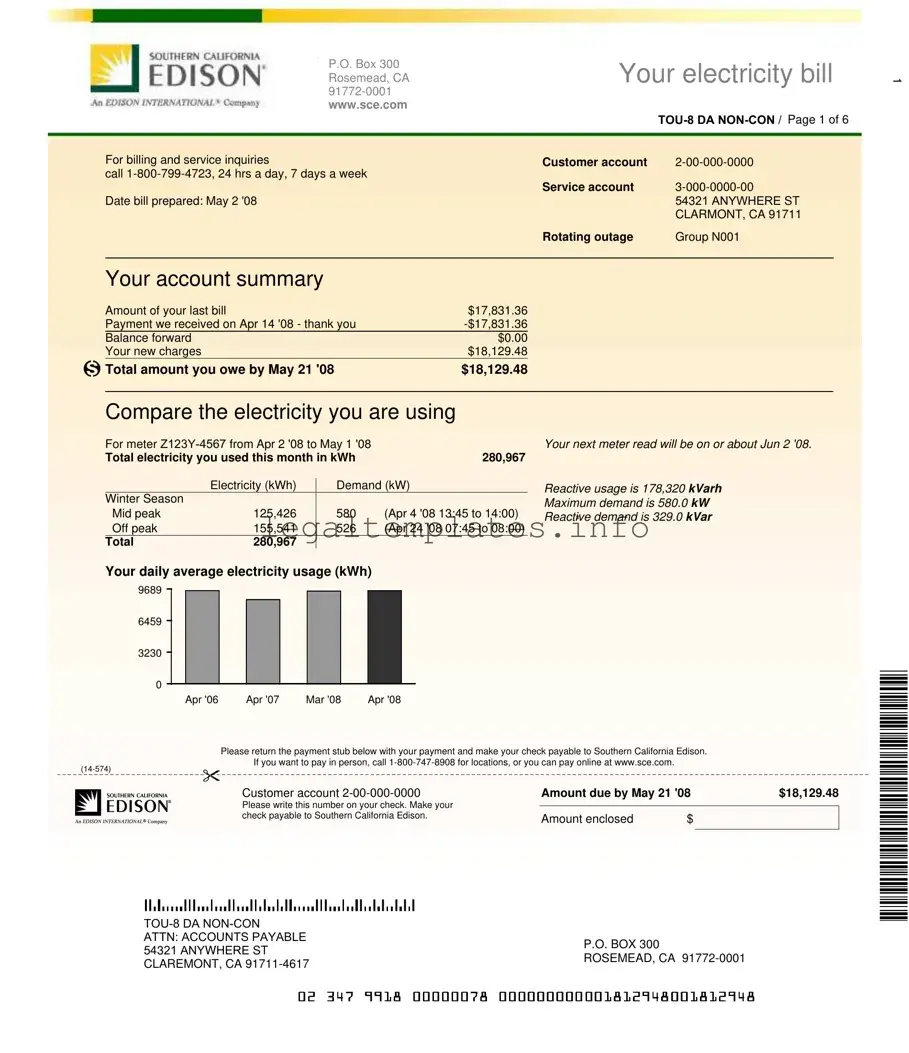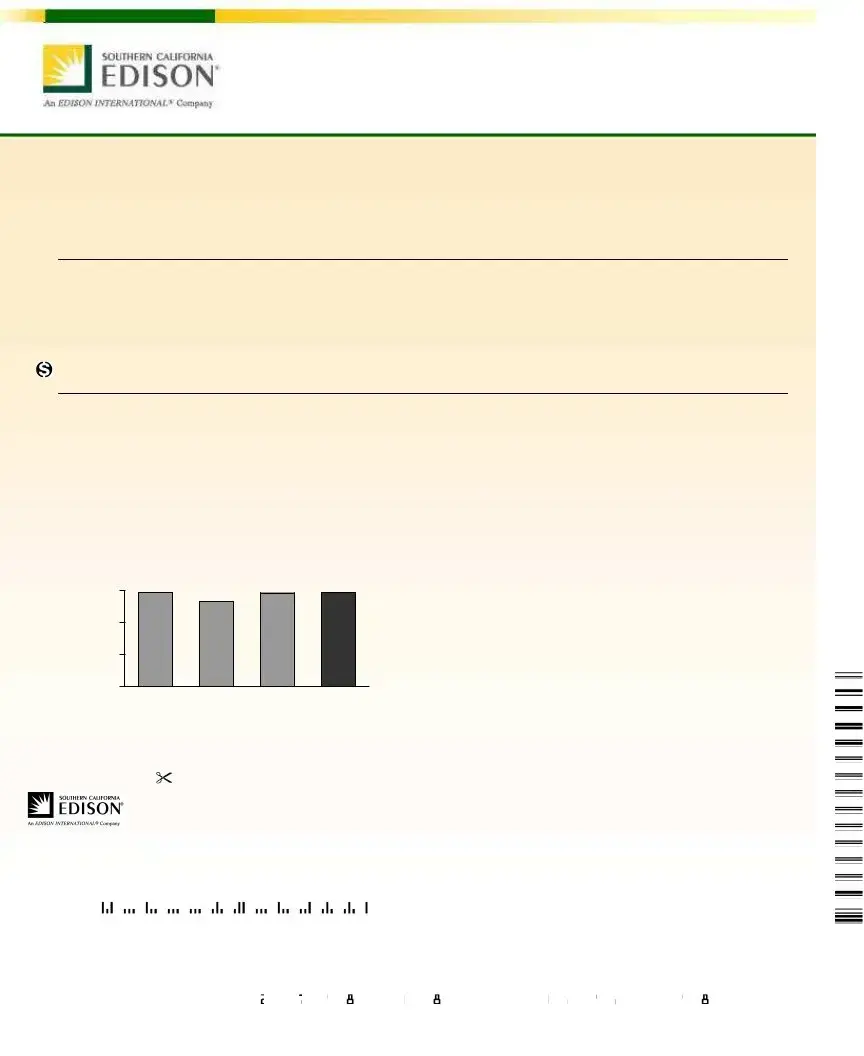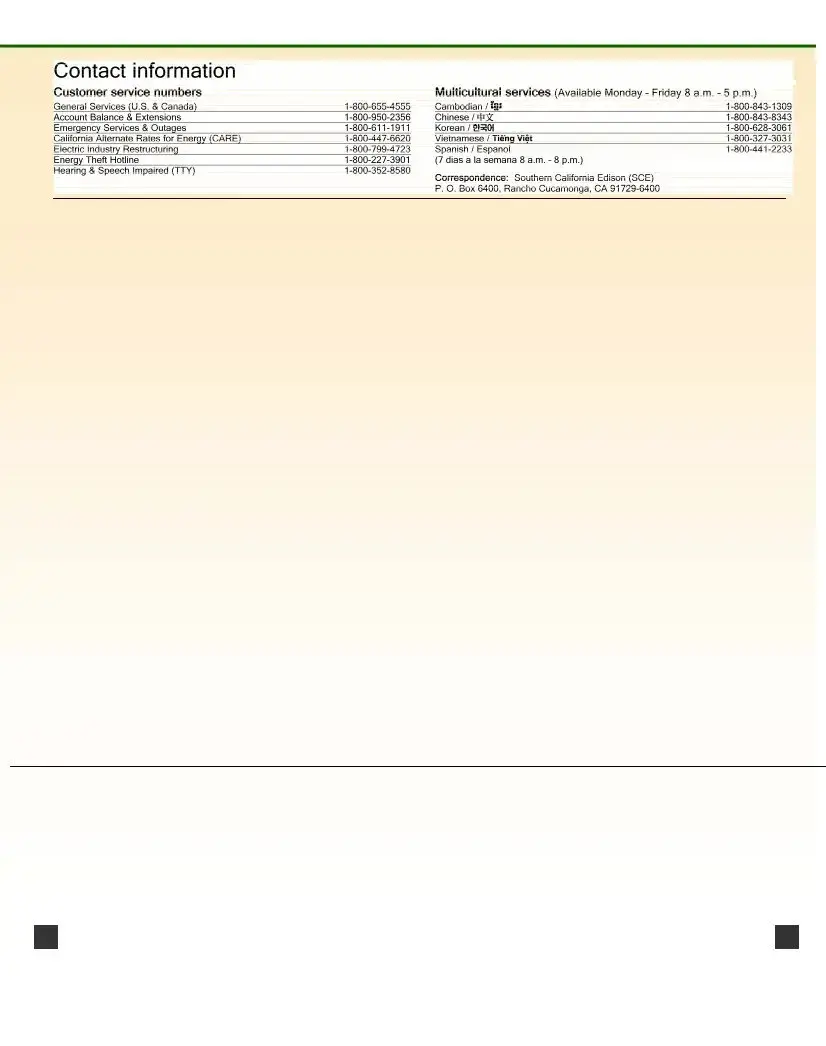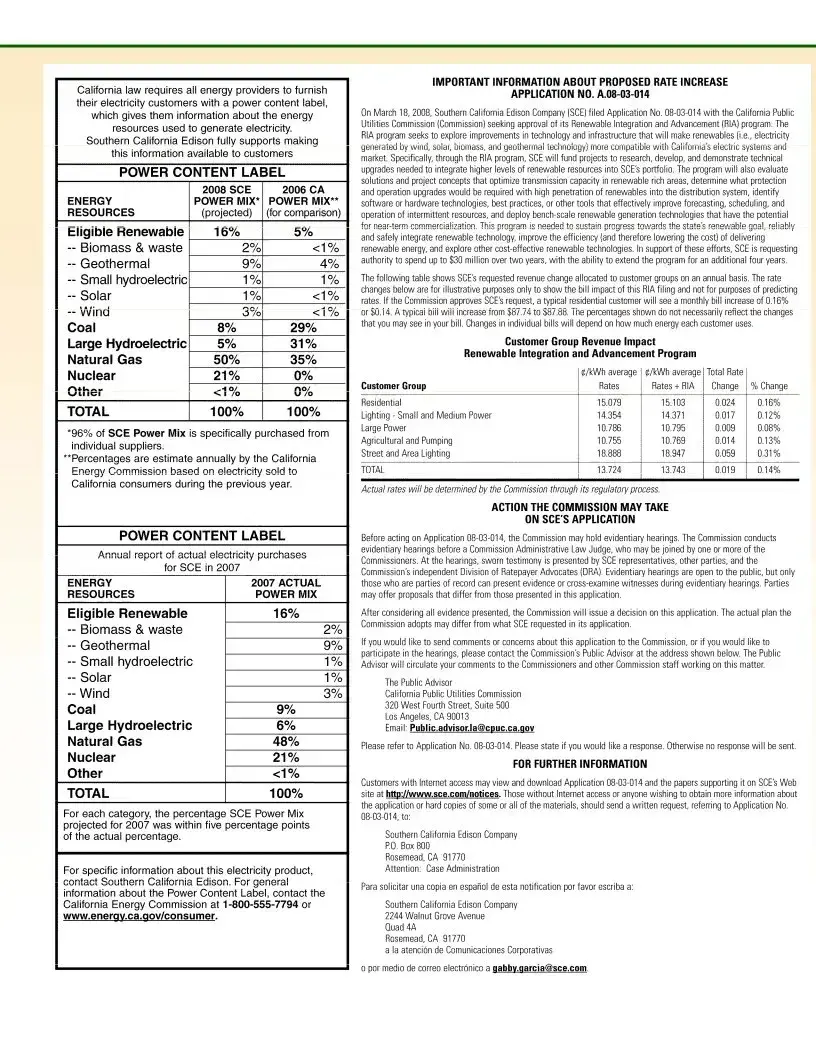One similar document to the Edison Electricity Bill form is a Water Utility Bill. Like the electricity bill, a water utility bill provides a detailed account of a customer's water usage over a billing period, including the total amount due and any past payments or balances carried forward. It often outlines charges based on consumption, as well as fixed service charges, and may provide information on peak and off-peak usage, much like kWh usage is detailed for electricity customers. Additionally, water bills usually have a due date for payment, offer various payment options, and outline fees for late payments or service reconnection, paralleling the structure found in an electricity bill.
A Credit Card Statement is another document that bears resemblance to the Edison Electricity Bill form in several ways. Credit card statements provide a summary of the account holder's activity for the billing cycle, including any previous balance, new charges, payments, and the current amount owed. Detailed in similar manners, both documents list transactions or usage charges within a specified period and indicate a due date by which the new balance must be settled. Instructions for payment and information on late payment penalties are also common features of both types of documents.
The Natural Gas Bill shares similarities with the electricity bill as it details the consumption of a different utility over a billing period. It breaks down the customer's gas usage, sometimes in therms, and converts this usage into charges, displaying any relevant taxes or fees. Much like electricity bills, gas bills might include information about the customer's meter reading, average daily usage, and comparisons to previous billing periods, plus options for paying the bill and penalties for late payment.
Cell Phone Bills are also akin to the Edison Electricity Bill form. They provide a comprehensive review of the customer’s usage of the service, including data, voice, and text, over the billing period. Fees for the services are itemized, showing any additional charges, such as for roaming or purchasing digital content. As with utility bills, cell phone bills highlight payment received, current charges, and the total amount due. They also often include payment instructions, late payment implications, and may offer insights into usage patterns or offer comparison to past periods.
A Mortgage Statement resembles the electricity bill in its structure and purpose. It outlines the amount owed by the homeowner for the period, detailing interest charges, principal payment, and possibly escrow payments for taxes and insurance. Similarly, it reflects any payments received during the period and the resulting balance. Both documents provide critical information about the account status, offer summaries of charges, and specify a due date for payment. Furthermore, they may provide options for managing the account online or making inquiries.
An Internet Service Provider (ISP) Bill also shares numerous features with an electricity bill. It details the customer's service charges over a billing circuit, including any additional fees for extra services or equipment rentals. It reflects past payments and states the current balance due, including a specific pay-by date to avoid service interruption or late fees. Many of the informational and logistical elements, such as account management options, customer service contact information, and payment methods, are presented similarly in both documents.
Lastly, a Cable TV Bill parallels the electricity bill form through its detailed account of subscription costs, equipment fees, and any pay-per-view or additional service charges incurred during the billing cycle. Payment history, current charges, and the total balance due are clearly outlined, along with the due date and consequences of late or non-payment. Options for service modification, customer support contacts, and payment avenues are typically provided, underscoring the customer-focused nature of both billing documents.






